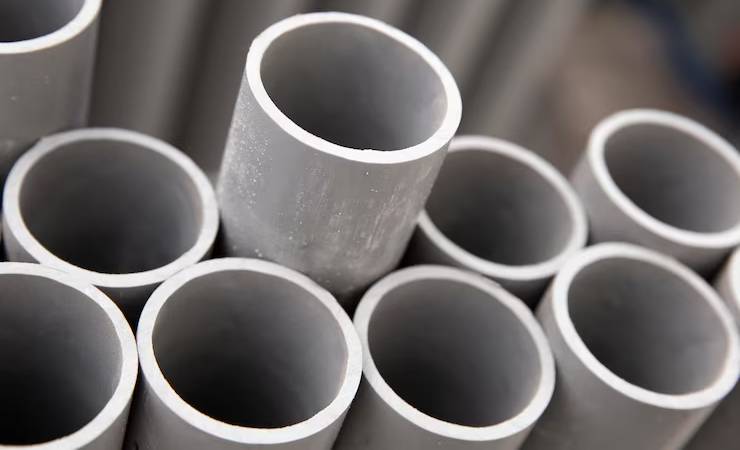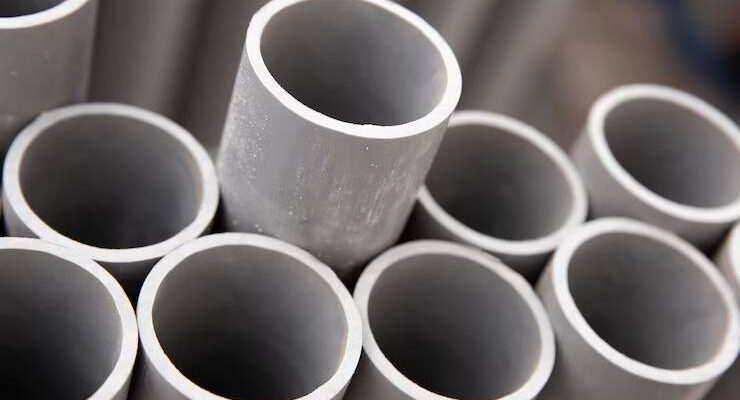
The selection of proper materials for making heat treatment furnaces can make or break your operation. 309 stainless steel pipe has emerged as a preferred choice for these demanding thermal environments. Its unique composition makes it particularly suited for applications where temperatures fluctuate dramatically and oxidation resistance becomes critical for success.
When installing 309 stainless steel pipes in heat treatment systems, you get unmatched performance under extreme conditions. The high chromium content (22-24%) paired with significant nickel (12-15%) creates an alloy that maintains structural integrity at temperatures reaching 1800°F (982°C). This combination resists scaling and distortion where other grades would fail.
Why Temperature Resistance Matters
Heat treatment furnaces create brutal conditions for metal components. Standard austenitic grades like 304 or 316 simply can’t handle prolonged exposure above 1500°F. The microstructure breaks down, leading to weakness and eventual failure.
The carbon content in 309 plays a crucial role in high-temperature stability. At 0.20% maximum, it’s carefully balanced to provide strength without compromising corrosion resistance. This matters because furnace components face both thermal and chemical stresses simultaneously.
You might wonder about cost considerations. Yes, 309 carries a higher price tag than basic grades. But calculate the expense of frequent replacements and production downtime. The math typically favors investing in material that lasts through years of thermal cycling.
Corrosion Resistance Properties
Furnace environments contain more than just heat. Combustion byproducts create corrosive atmospheres that attack metal surfaces. The oxide layer formed on 309 stainless provides excellent protection against sulfidation and other chemical attacks.
This protection doesn’t fade with time. Unlike coated carbon steel alternatives, the corrosion resistance is inherent to the material itself. Even if surface damage occurs, the underlying metal continues to resist deterioration under harsh operating conditions.
Many operators report significantly longer service life when switching from other materials to 309 pipes. The combination of oxidation resistance at high temperatures and general corrosion resistance makes it uniquely suited for furnace applications where failure isn’t an option.
Installation Considerations
Working with 309 requires some special attention. The material tends to harden during fabrication, which means proper tools and techniques matter. Cutting and welding should follow procedures specific to high-nickel austenitic stainless steels.
Pre-heating before welding helps prevent cracking in heat-affected zones. Though slightly more involved than working with carbon steel, these extra steps pay dividends in system reliability. Most experienced fabricators are familiar with the requirements.
Temperature cycling creates stress on connections. Using proper expansion joints and allowing for thermal movement prevents warping and joint failures. These small design considerations dramatically extend the useful life of furnace piping systems.
Maintenance Requirements
Despite its durability, 309 stainless steel pipe requires periodic inspection. Checking for signs of localized overheating or unexpected corrosion helps catch potential issues before failure occurs. Most operations schedule annual inspections during planned downtime.
Surface discoloration doesn’t necessarily indicate failure. The characteristic blue-brown tint that develops on 309 during high-temperature service is normal oxide formation. This layer actually enhances protection rather than signaling deterioration.
Documentation of operating conditions proves valuable for troubleshooting and future reference. Recording temperature cycles and any unusual events creates a history that helps predict service life and optimize maintenance schedules for furnace components.
Common Applications Beyond Furnaces
While heat treatment furnaces represent a primary use case, 309 stainless steel pipe proves valuable in other high-temperature settings. Chemical processing equipment, waste incinerators, and power generation facilities all benefit from its exceptional properties.
Petrochemical crackers, where hydrocarbons undergo thermal decomposition at extreme temperatures, often specify 309 for critical components. The combination of heat and potentially corrosive process chemicals demands materials that won’t compromise under stress.
Food processing equipment occasionally uses 309 where both sanitation and high heat resistance matter. Though usually overkill for standard food applications, specialized thermal processing equipment benefits from its durability and clean surface characteristics.
Material Alternatives and Comparisons
Sometimes 310S stainless gets considered alongside 309. With slightly higher nickel content, 310S offers marginally better high-temperature performance but comes at a premium price point. For most heat treatment applications, 309 hits the sweet spot of performance versus cost.
Heat-resistant alloys like Inconel provide even better high-temperature performance but at substantially higher cost. Unless temperatures regularly exceed 2000°F, 309 stainless typically offers the most economical long-term solution for furnace components.
Some operations attempt to use 304H (a high-carbon variant of 304) to save costs. While suitable for moderately elevated temperatures, it simply doesn’t match 309’s performance above 1600°F. The small initial savings often lead to premature replacement costs.
Industry Standards and Specifications
Understanding the relevant ASTM specifications helps ensure you get proper materials. ASTM A213 and A312 cover seamless 309 stainless steel pipe for high-temperature service. These standards define chemical composition, mechanical properties, and testing requirements.
Many furnace designers specify additional testing beyond standard requirements. This might include elevated temperature tensile testing or specific corrosion resistance verification. These extra steps add minimal cost while providing confidence in material performance.
Supply chain considerations matter when sourcing 309 pipes. Lead times can be longer than for common grades, so planning ahead prevents project delays. Working with suppliers who maintain inventory of high-temperature alloys often proves advantageous.
Conclusion
309 stainless steel pipe stands out as the material of choice for heat treatment furnaces where reliability matters. The combination of temperature resistance, corrosion protection, and reasonable cost makes it ideal for these demanding applications. By understanding its properties and limitations, you can make informed decisions that maximize equipment lifespan and minimize costly downtime.
Featured Image Source: https://img.freepik.com/free-photo/minimalist-construction-pvc-pipes-assortment_23-2149106854.jpg

